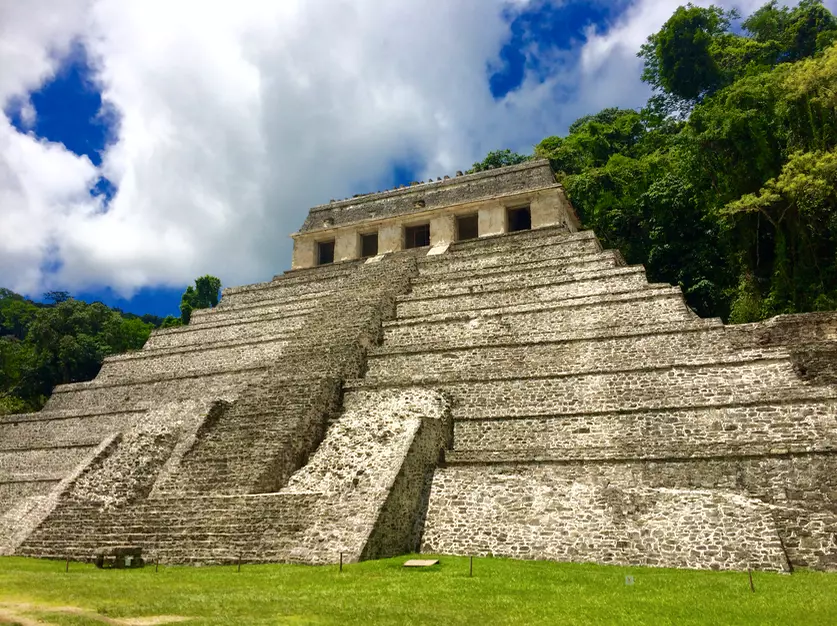Mexico is one of the most fertile regions of the world for exploration into human cultural evolution. Over 3,000 years of achievement have left an indelible mark on Mexico, punctuating the country with astonishing examples of human ingenuity and perseverance.
Perhaps no country on earth showcases its ancient treasures as attractively as does Mexico. There are more than 200,000 known archaeological sites, of which only a small percentage have been fully excavated and studied. Dozens of sites have been meticulously restored and are easily accessible to visitors. Others lie buried or ensconced by dense tropical jungle, providing visitors with more adventurous, “Indiana Jones” -type experiences.

By any measure, the native achievements of Mexico’s pre-Hispanic societies are remarkable. Common features of pre-Hispanic Mesoamerican culture include:
- Truncated, stepped pyramids made of carved stone
- Ball courts
- Steam baths
- Elaborate burial chambers
- Hieroglyphic writing
- Positional numeration and advanced mathematics
- Intricate books folded screen-style (or “codices”)
- Use of a solar year of 18 months, each with 20 days (plus five days at the end of each year; totaling 365 days)
- Use of a 52-year century
- Advanced astrological knowledge
- Skilled artistic expression in pottery, stone carving, weaving, and painting.

These traits define a truly advanced culture, capable of producing writing, great works of art, complex mathematics, calendrics and monumental architecture. In botanical terms, the world can thank Mexico for the tomato, squash, vanilla, chocolate, chili peppers, the avocado and (most importantly) maize.
This diversity creates spaces for US and Canadians looking for overseas living opportunities. Across Mexico’s 32 states, there are North Americans exploring and realizing Mexico for living futures. Choosing Mexico can help. Whether it be the Yucatan, the Mexican Pacific Riviera, the Central Highlands, Oaxaca or a 16th Century Spanish town, Mexico has more location and lifestyle choices that any country in the Americas.
Mexico’s pre-Hispanic societies were constantly menaced by natural phenomena: earthquakes, famine, droughts, floods, and volcanic eruptions. These conditions conspired to give the people of Mexico a unique view of creation and life. Religion became the manifestation of each society’s desire to give order and reason to natural occurrences they thought otherwise unexplainable. Religion, in turn, spawned evocative and wondrous expressions in art and architecture that were developed to exalt the natural world.
A rich pantheon of gods was created to serve as guides in every phase of life. This collection of holy beings was crowded with deities for every function, from the rising of the sun to the appearance of certain planets, to planting and sowing, to birth and death. All created things were explained or rationalized by strict obedience to religious dogma.
These societies were largely theocratic in structure. Authority rested with an elite class of high-priest rulers. Nonetheless, strong family and kinship bonds formed the basis of most cultures, as holds true even today.


